《英语词汇学引论》
| 作者 | 林承璋编著 编者 |
|---|---|
| 出版 | 武汉:武汉大学出版社 |
| 参考页数 | 407 |
| 出版时间 | 1987(求助前请核对) 目录预览 |
| ISBN号 | 730700061X — 求助条款 |
| PDF编号 | 86994898(仅供预览,未存储实际文件) |
| 求助格式 | 扫描PDF(若分多册发行,每次仅能受理1册) |
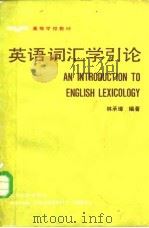
Chapter1
Language,Linguistics and Lexicology1
1-1-1:A Definition of Language1
Contents1
Chapter2
1-1-2:Language,Society and Thought2
Chapter3
Chapter4
1-2-1:A Definition of Linguistics5
1-2-2:The Scope of Linguistics5
Chapter5
1-3-1:What Is Lexicology?6
1-3-2:Aims and Significance of the Course6
Chapter6
of English Lexicology6
1-3-3:The Connection of Lexicology with7
Chapter7
1.With phonetics7
Other Branches of Linguistics7
Chapter8
3.With stylistics8
2.With grammar8
English Lexicology9
4.With historical linguistics9
1-3-4:Two Approaches to the Study of9
English Language in the Indo-European12
Family12
2-1-1:The English People and the English12
Language12
The Sources of the English Vocabulary12
2-1-2:The Position and Character of the12
English Language13
2-1-3:The Divisions of the History of the13
2-1-4:Some Characteristics of Old English14
2-1-5:Some Characteristics of Middle English17
2-1-6:Some Characteristics of Modern En-19
glish19
2-2-1:Words of Native Origin23
2-2-2:Borrowed words in the English Voca-26
bulary26
1.Causes and means of borrowings27
into English27
2.Four groups of loan-words28
glish Vocabulary31
2-3-2:The Scandinavian Element in the En-31
Vocabulary31
2-3-1:The Foreign Elements in the English31
2-3-3:The French Element in the English34
Vocabulary34
1.French loan-words in the Middle36
English period36
2.French loan-words after the Mid-38
dle English period38
2-3-4:The Latin Element in the English39
Vocabulary39
1.The zero period of Latin influence39
2.The first period of Latin influence40
3.The second period of Latin influ-41
ence41
4.The third period of Latin influence42
5.The fourth period of Latin influ-42
ence42
Vocabulary44
3.Words relating to hatural sciences44
4.Words relating to social sciences44
1.Words relating to literature44
2-3-5:The Greek Element in the English44
2.Words relating to linguistics44
ments upon the English Vocabulary45
2-3-6:The Influence of the Classical Ele-45
5.Words relating to medicine45
ments in the English vocabulary46
classical elements46
1.The preciseness of meaning of the46
2.The richness of the classical ele-46
3.The cosmopolitan character of the47
classical elements47
2-3-7:Other Foreign Elements in the English48
Vocabulary48
Foreign Elements in the English50
2-3-8:Interrelation between the Native and50
Vocabulary50
Word Meaning and Semantic Relations53
3-1-1:Some General Remarks on Semantics53
and Meaning53
and the Object57
3-1-2:The Relationship between Meaning57
3-2-1:What Is a Word?58
3-2-2:Meaning and Motivation60
1.Phonetic motivation61
2.Grammatical motivation61
3.Motivation by meaning62
and grammatical function of words62
3-3-1:Classifications of Words62
1.According to the lexical meaning62
2.According to the usage of words63
3.According to the character of65
words65
4.According to motivation65
6.According to the origin66
monosemy66
5.According to polysemy and66
3.Contextual meaning67
1.Grammatical meaning67
3-3-2:Main Types of Word Meaning67
2.Lexical meaning67
4.Denotational meaning68
5.Connotative meaning69
6.Stylistic meaning69
non-linguistic72
3-3-3:Word Meaning and Context72
Two types of context:linguistic and72
3-4-4:Synonyms76
1.What are synonyms?76
2.The scurces of synonyms77
3.The significance of studying79
synonyms79
4.Absolute synonyms and relative80
synonyms80
1.What are antonyms?84
3-4-2:Antonyms84
2.Types of antonyms85
3.Different antonyms for one word88
4.Use of antonyms89
shift91
2.Two main processes of sense-91
1.The definition of polysemy91
3-4-3:Polysemy and Homonymy91
homonyms95
3.The definition of homonymy and95
4.Classification of homonyms95
5.Three ways of forming homonyms99
The Changing English Vocabulary103
4-1-1:Neologisms103
1.The definition of neologisms103
2.The rate of changes of the English104
vocabulary104
3.The sources of new words104
4.The formation of neologisms120
4-1-2:Archaisms128
1.The definition of archaisms128
of words128
2.The reasons for the disappearance128
3.Obsolete words used at the present129
time129
4-2-1:Changes in Meaning133
1.Historical causes133
3.Psychological causes134
2.Social causes134
4.Linguistic causes135
4-2-2:Four Tendencies in Semantic Changes135
1.Extension of meaning(generaliza-136
tion)136
2.Narrowing of meaning(specializa-142
tion)142
3.Elevation of meaning(amelioration)146
4.Degradation of meaning(deteriora-147
tion)147
1.Metaphor150
Use150
4-2-3:Semantic Changes from the Literal150
Use of Words to Their Figurative150
2.Metonymy161
3.Synecdoche166
4.Euphemism167
sification of words173
1.Morphological structure and clas-173
Word-fomation in English173
5-1-1:Introduction173
2.Two types of morphemes174
3.Three types of words176
4.Root,base,stem177
formation185
5-2-1:The Main Processes of English Word-185
1.Affixation186
2.Conversion243
3.Compounding259
glish270
1.Clipping or shortening270
5-2-2:Other Ways of Word-building in.En-270
2.Acronyms272
3.Blending276
4.Back-formation278
5.Forming new words by analogy280
6.Onomatopoeia281
English Idioms284
6-1-1:The Definition of Idioms284
6-1-2:The Significance of Studying English285
Idioms285
6-1-3:The Features of English Idioms286
6-1-4:English Idioms in Different Styles290
1.Idioms used in colloquial style290
2.Idioms used in any situation292
3.Idioms used in formal situation292
4.Idioms used as slang293
6-2-1:Classification of English Idioms294
6-1-5:The Differences between Idiomatic and294
Free phrases294
1.Idiomatic expressions with speci-295
fic grammtical structure295
parts of speech298
2.Phrases identified with the familiar298
3.Idioms not correlative with a given311
grammatical part of speech311
4.Idioms expressing greeting,surprise,315
praiso,or critisism315
5.Proverbs316
6-2-2:English Idioms around Different Sub-320
jects320
1.Idioms containing names of birds320
and animals320
of the human body321
2.Idioms containing names of parts321
3.Idioms involving colors324
to clothes325
4.Idioms containing words related325
5.Idioms involving time326
6.Idioms involving flowers and plants327
7.Idioms containing words related329
to fruit329
8.Idioms containing words related330
to shapes and measures330
British and American English332
7-1-1:English as a Language of World-wide332
Use332
7-1-2:British and American English334
7-1-3:The Historical Background of American338
English338
7-2-1:Differences between British and American340
English340
7-2-2:Differences in Individual Sounds341
7-2-3:Differences in Stress343
7-2-4:Differences in Spelling344
7-2-5:Differences in Vocabulary346
7-2-6:Differences in Grammar359
7-3-1:Two Contrasting Word-lists364
7-3-2:British and American English in the379
Future379
English Dictionaries and How to Use Them380
8-1-1:What Is a Dictionary?380
8-1-2:Characteristics of Dictionaries (382
8-2-1:Types of Dictionaries383
8-2-2:Monolingual,Bilingual and Multilingual384
Dictionaries384
8-2-3:General and Special Dictionaries385
8-2-4:Pocket,Medium-sized and Unabridged387
Dictionaries387
8-2-5:Synchronic and Diachronic387
Dictionaries387
8-2-6:Encyclopaedias and Encyclopedic388
Dictionaries388
8-3-1:The History of English Dictionaries390
8-3-2:Five Periods in the History of English392
Dictionaries392
8-4-1:How to Use English Dictionaries394
Bibliography403
1987《英语词汇学引论》由于是年代较久的资料都绝版了,几乎不可能购买到实物。如果大家为了学习确实需要,可向博主求助其电子版PDF文件(由林承璋编著 1987 武汉:武汉大学出版社 出版的版本) 。对合法合规的求助,我会当即受理并将下载地址发送给你。
高度相关资料
-

- 现代英语词汇学
- 1983 上海:上海外语教育出版社
-

- 现代英语词汇学概论
- 1986
-

- 大学英语词汇词典
- 南京航空航天大学
-

- 英语词汇学引论
- 1960 北京:商务印书馆
-
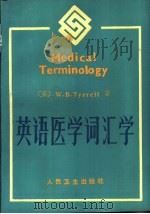
- 英语医学词汇学
- 1985 北京:人民卫生出版社
-

- 现代英语词汇学
- 1985 合肥:安徽教育出版社
-

- 汉语词汇学引论
- 1992 北京:商务印书馆
-

- 英语词汇学
- 1999 北京:外语教学与研究出版社
-
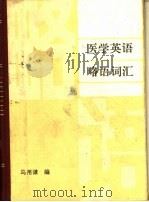
- 医学英语略语词汇
- 1983 北京:人民卫生出版社
-

- 大学英语词汇5400
- 1984 沈阳:辽宁科学技术出版社
-
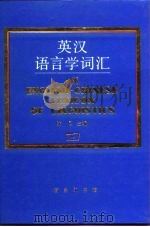
- 英汉语言学词汇
- 1998 北京:商务印书馆
-
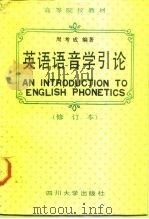
- 英语语音学引论
- 1990 成都:四川大学出版社
-
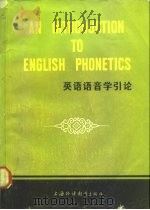
- 英语语音学引论
- 1984 上海:上海外语教育出版社
-

- 大学英语词汇
- 1986 武汉:华中师范大学出版社
提示:百度云已更名为百度网盘(百度盘),天翼云盘、微盘下载地址……暂未提供。➥ PDF文字可复制化或转WORD
